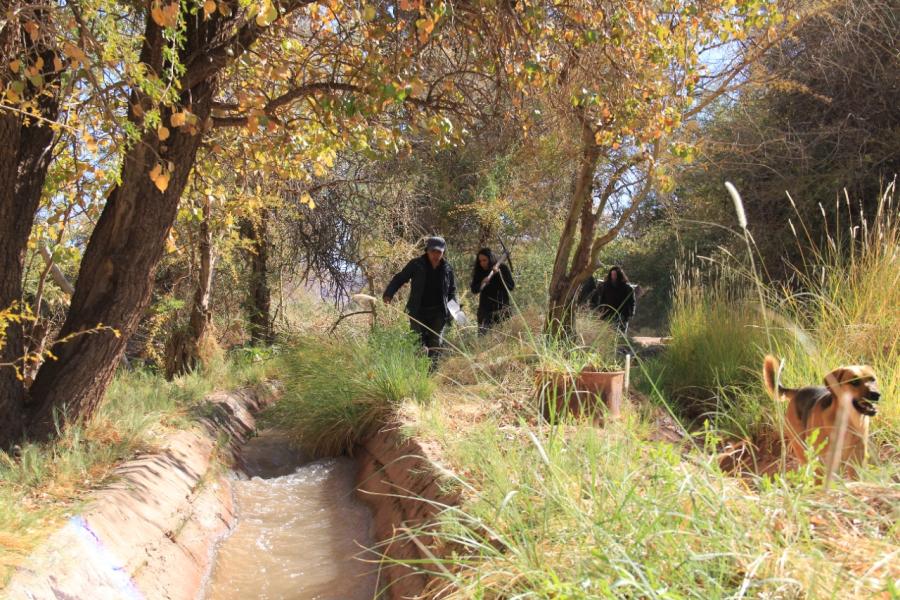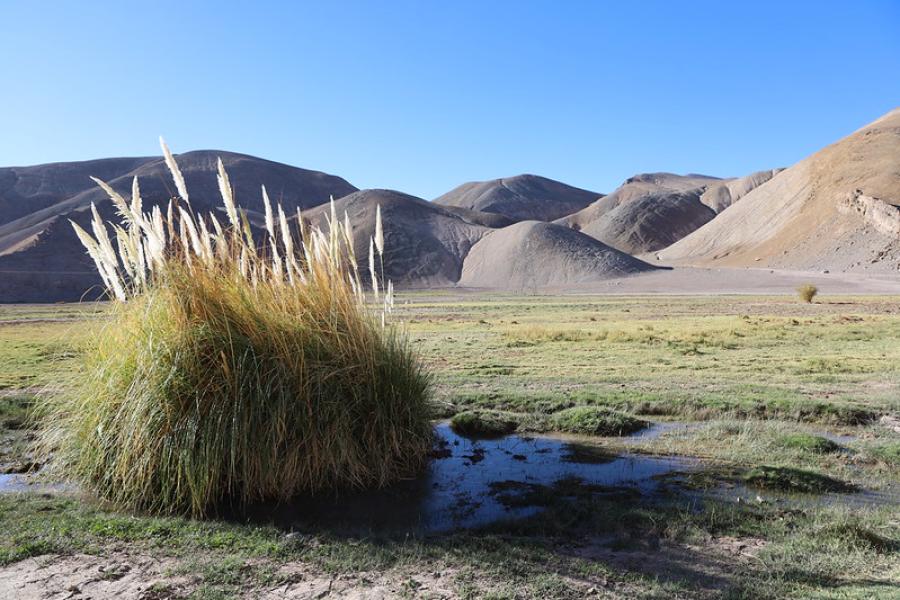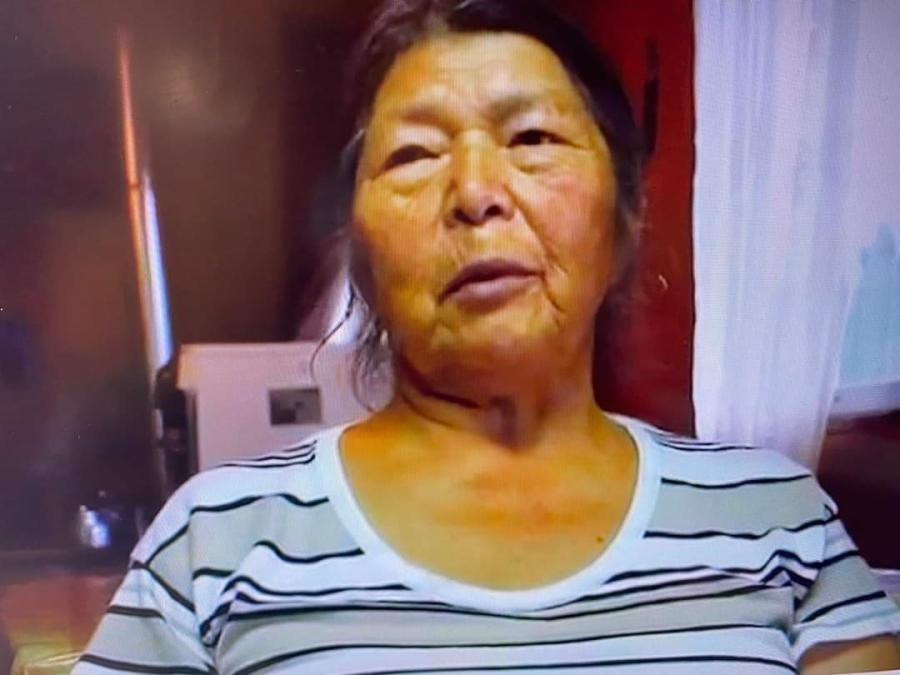Indigenous people in Chile’s Huasco Valley have held onto their land and their identity for 4,000 years despite conquerors, dictators, and a dominant culture that didn’t recognize their existence. Now they face a new threat, one that glitters.
Legend has it that it was the Inca leaders of Cuzco who told the Spanish colonizers that there were hidden riches in the south. Dreaming of gold, the Spanish, who had already taken the land and treasures of the native Peruvians, headed south for Chile to expand their colonial empire. Neither the Spaniards nor the leaders of the Incan empire could have imagined the magnitude of Chile’s natural resource fortune—now measured in the hundreds of billions of dollars—or the degree to which getting those riches would disrupt indigenous cultures.
This dynamic is still being played out today in the Huasco Valley of northern Chile, which is the traditional home of the Diaguita people. The 700-mile-long Huasco River is fed by glaciers and nourishes the lush vineyards, tropical fruits, avocados, and legumes of the Huasco Valley microclimate. The valley is known for its freshwater shrimp, artisan olive oil, grapes, Pisco (the national liquor), and Pajarete liqueurs. Unfortunately for the Diaguita, the Huasco Valley is also known for its gold, silver, and copper deposits.
The river is fed by two tributaries in the valleys of El Carmen and El Tránsito, the second of which is home to the Diaguita. Some locals believe the indigenous peoples imposed taxes on dried fruits to keep the Spanish out of El Tránsito, and others say the Spanish took the “better” valley and left the lesser for the native Diaguita. Today, the families of El Tránsito still have Diaguita indigenous last names such as Campillay and Huanchicay, and those in El Carmen have last names of Spanish descent like Rojas and Marín.
Chilean history students have always learned that the Diaguita pueblo, or community, existed only from a.d. 900 to 1500, and the Diaguita name was not spoken in public discourse between the Spaniards’ arrival and 2001, when a fieldwork study was carried out by the Chilean Commission for True History and New Treatment. In the course of that fieldwork, Diaguita descendants told stories of their recent ancestors, and archeologists began to share their artifacts with the local people. In 2002, the residents of the Huasco Valley established the Diaguita Cultural Center. Suspicious outsiders say that the Diaguita identity is being revived just to get indigenous benefits under Chilean law. The Diaguita, however, say that the Diaguita ethnicity has persisted for centuries. Community member Oscar Cubillos Cuello says, “The disappearance of the Diaguita name is the fault of the anthropologists who never came to our land to interview us. The ethnicity has always lived; it is not dead.”
On September 8, 2006, the government came to the same conclusion and passed Chilean Law 20.117, which recognized the “existence and cultural attributes of the Diaguita ethnicity and the indigenous nature of the Diaguita people.” That declaration has significant cultural implications, of course, but it also has major political ramifications. The recognition of the Diaguita as indigenous people gives them rights to their traditional lands, but a significant portion of those lands have already been appropriated by the state, and that land is now extremely valuable.
The Diaguitas’ land was taken from them not by the Spaniards during 16th century colonization, but in 1997, when the government claimed 40 percent of the Diaguitas’ territory and divided it into three haciendas. One of those haciendas, Chollay, is currently being developed by the Barrick Gold Corporation of Canada. In October 2006, Nevada, Ltd., a subsidiary of Barrick Gold, began the construction of Pascua Lama gold mine in the mountains above Huasco Valley. The company is digging a gorge about a mile long and 1,800 feet deep, where ore will be extracted and processed using cyanide (the standard method for processing gold ore). The corporation had proposed drilling into three glaciers, one of which feeds the Huasco River, until valley residents and international environmentalists protested in Huasco’s main city of Vallenar and in Santiago throughout 2005.
Swayed to some degree by the protests, the Chilean government barred the mining company from touching the glaciers, and with that most serious concern addressed, gave the project final approval in early 2006. The company itself claims it will minimize the social and environmental impacts of its operations. They will give the local government $60 million for agriculture and will invest a further $10 million in the valley’s towns. In addition, the mine has hired the most advanced mining experts and is using state-of-the-art technology. “It still puzzles me why there is so much controversy,” Pascua-Lama project manager Ron Kettles told the New York Times. “This is far and away the safest and most environmentally sensitive project that I’ve ever built in 40 years in this business.”
Certainly there are those among the 70,000 residents of the Huasco Valley who welcome the mine and hope to be selected as one of 5,500 workers employed there. Most residents of Vallenar, Huasco Valley’s humble palm-lined metropolis, speak fondly of the mining industry. The city was once the prosperous hub of the mineral region, but it has fallen on hard times and now has an unemployment rate of 18 percent. Many there see the Barrick mine as a source of potential economic revitalization for the city.
But for the 262 Diaguita families of the Agricultural Community of Huasco Alto, land is the crux of their identity and the mine is a threat. Local Diaguita say that the mine is “new colonization, by transnational corporations.” When asked what “being Diaguita” means to them, residents of the valley have a standard response: “I was born here.” Most inhabitants of El Tránsito Valley—and El Carmen, too, for that matter—have never left the valleys. Many tell stories of their parents meeting down-valley and moving to the interior to farm their grandparents’ land. Many of the Diaguita families who no longer own ancestral land have a combination of indigenous and Spanish blood, but they choose to identify as indigenous because they, too, value the land in Huasco Valley as their native ancestors did. Some Diaguita families traveled north to take advantage of employment opportunities in the gold and copper mining industries from the 19th to early 20th centuries, but most returned to Huasco. “It’s like a magnet,” say residents across Huasco Valley, from Huasco to Vallenar and into the interior. “You might leave, but you always find yourself coming back.”
The history of the Diaguitas’ land claims is as long and winding as the dirt road that traces the Huasco River up the valley—a road along which pedestrians, horseback riders, and local buses ride from Vallenar to the pueblos of the valley interior. The interior is called Huasco Alto, and various pueblos or communities have lived here since 4000 b.c. The Molle were followed by the Ánimas, Copiapó, and the Diaguita cultures. The Diaguita developed between a.d. 1000 and 1470, when they were invaded by the Inca, and 1540, when the Spanish arrived. The Spanish divided the land into a grid of large landholdings, on which they built haciendas and estancias. The natives ranched, farmed, and mined land belonging to the Spanish patrons, and paid a portion of their produce to them. Under this system, the indigenous people were assigned land and permitted to use it freely.
In the Huasco Valley, the indigenous community was divided by geographic location: Huasco Alto, Paisanaza, and Huasco Bajo. The majority of the native land that was not usurped by the Spaniards was found in the valley’s interior, Huasco Alto. The year 1750 is of great significance to the huascoaltinos, as the indigenous people mounted armed resistance against the state, which hoped to reduce their territory to the space between two mountain ranges in the valley of El Carmen. The indigenous people won the battle, and, in 1757, El Tránsito river valley became huascoaltino territory, creating an environment for the Diaguita people to live autonomously.
At the onset of the country’s independence, the Republic of Chile asserted a new form of control over Diaguita territory. Laws passed in 1823 and 1830 aimed to eliminate Chile’s indigenous communities altogether, transferring most of their property to the state through a process called reduction. The republic hoped for a Chile without natives, at least from Copiapó at the foot of the Atacama Desert to the lakes district. This area comprises the whole of the country’s inhabitable, temperate central valley suitable for lucrative agriculture, ranching, and mining. Fortunately, the authorities focused their efforts on the valleys surrounding Santiago. The huascoaltino Diaguitas were able to conserve most of the territory they have called home since before the Spaniards’ arrival.
In 1993, the Chilean government issued Law 19.253, politically legitimizing the right to organize around a social tradition or culture. This should have cemented the Diaguitas’ land claims, but under the law the Diaguita ethnicity was not recognized. Politicians and anthropologists and Huasco Valley residents alike had no idea that the Diaguita had survived colonization intact. Archeologists had not collaborated enough with locals to realize that many of their beliefs and customs were in line with those represented in the ancient ceramics, roofs, and graves they uncovered. Social anthropologists had not begun to rescue the family histories, pastimes, foods, and legends of living valley residents. As a result, local indigenous histories and regional colonial struggles have not been incorporated into elementary school history classes in Huasco Province. School children learn brief biographies of the prominent conquerors of central Chile but not about the battles their respective ancestors fought.
On August 22, 2006, the Huascoaltino Agricultural Community wrote a letter to President Michelle Bachelet about this situation, asking for official recognition of their overlooked identity. “At the beginning of the 1990s,” they wrote, “our Diaguita identity still had not been presented publicly, because we were accustomed to organizing ourselves like farmers and ranchers. Moreover, we had forgotten our own history, and our schools did not teach us, nor did they teach our children, about where we had come from and who we were . . . [but] up to this moment, we maintained our own property, and with it our customs and way of life remained intact.”
That letter, one of many sent by the agricultural community and the Diaguita Community Center since 2002, worked, and one month later the government recognized them. But that recognition may have come too late. The government gave final approval to the gold mine earlier this year, and all decisions concerning the land are now made by the mining corporation, which will certainly proceed with planned extractions. How will the Chilean government begin to repay the newly “re-identified” indigenous descendants who they have agreed to protect by law? The Diaguita will not forget that they were denied the right to partake in negotiations for the use of their land. For indigenous families, monetary compensation could never come close to recovering the loss of their land, their sustainable way of life, and the worldview those represent.
Nancy Yáñez is a professor in the Law Department at the University of Chile and codirector of the Observatory of Indigenous Peoples Rights.
Sarah Rea is an anthropology student at Harvard University. She conducted independent fieldwork in Chile in 2006, focusing on indigenous politics in the Huasco Valley.



